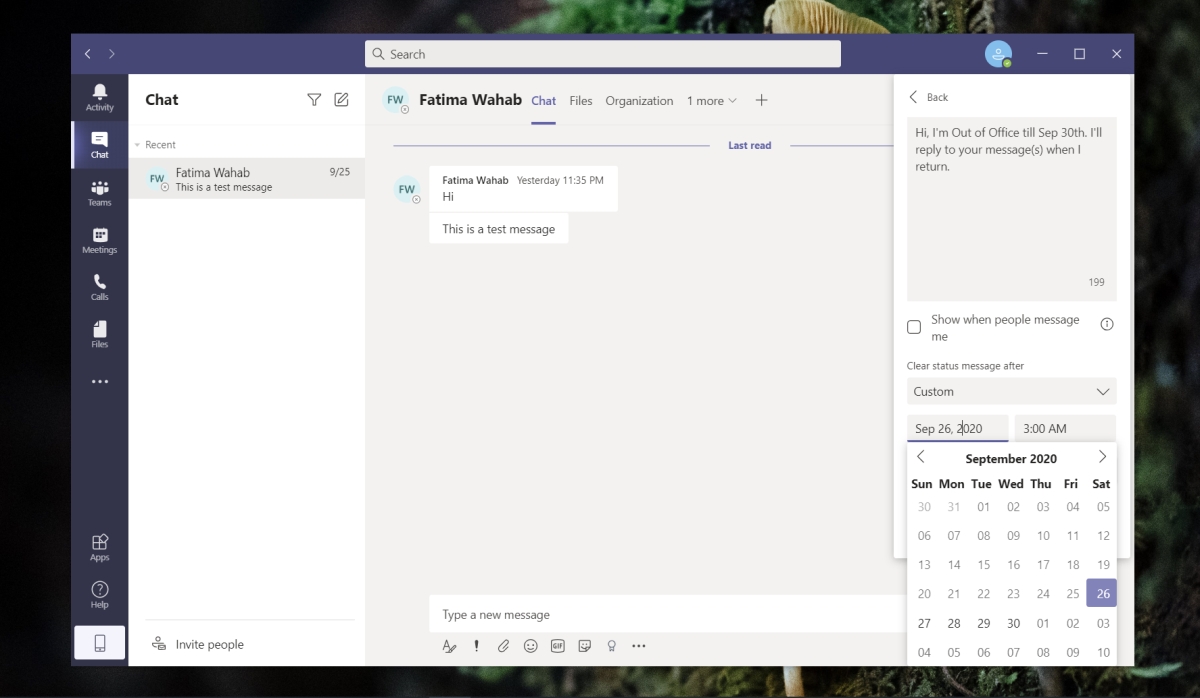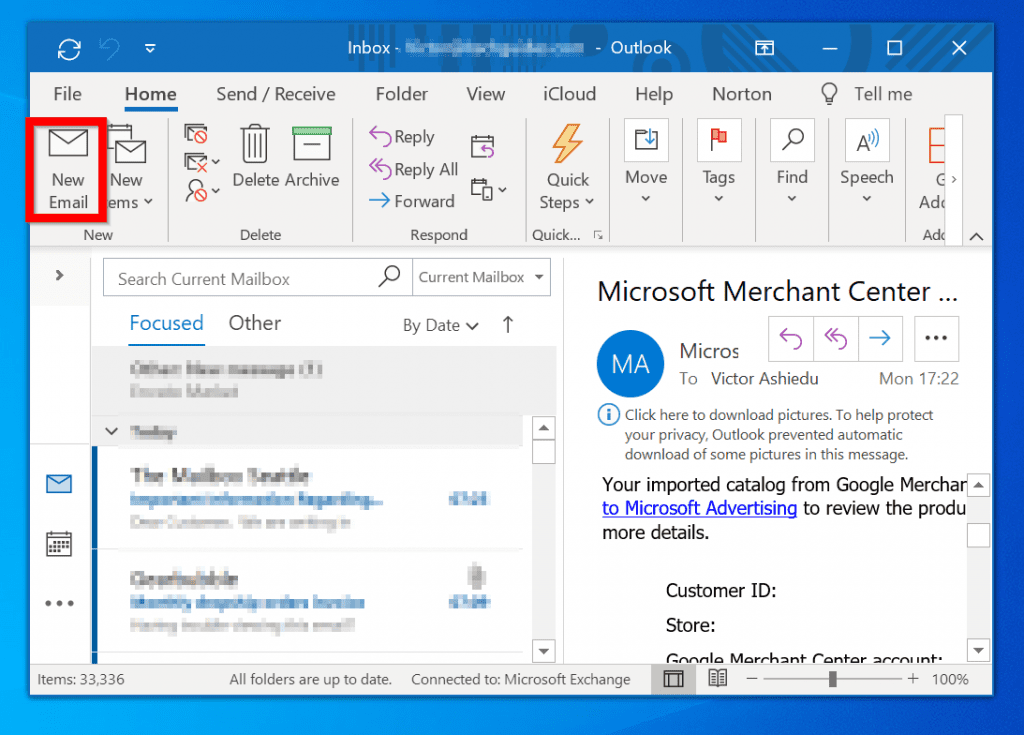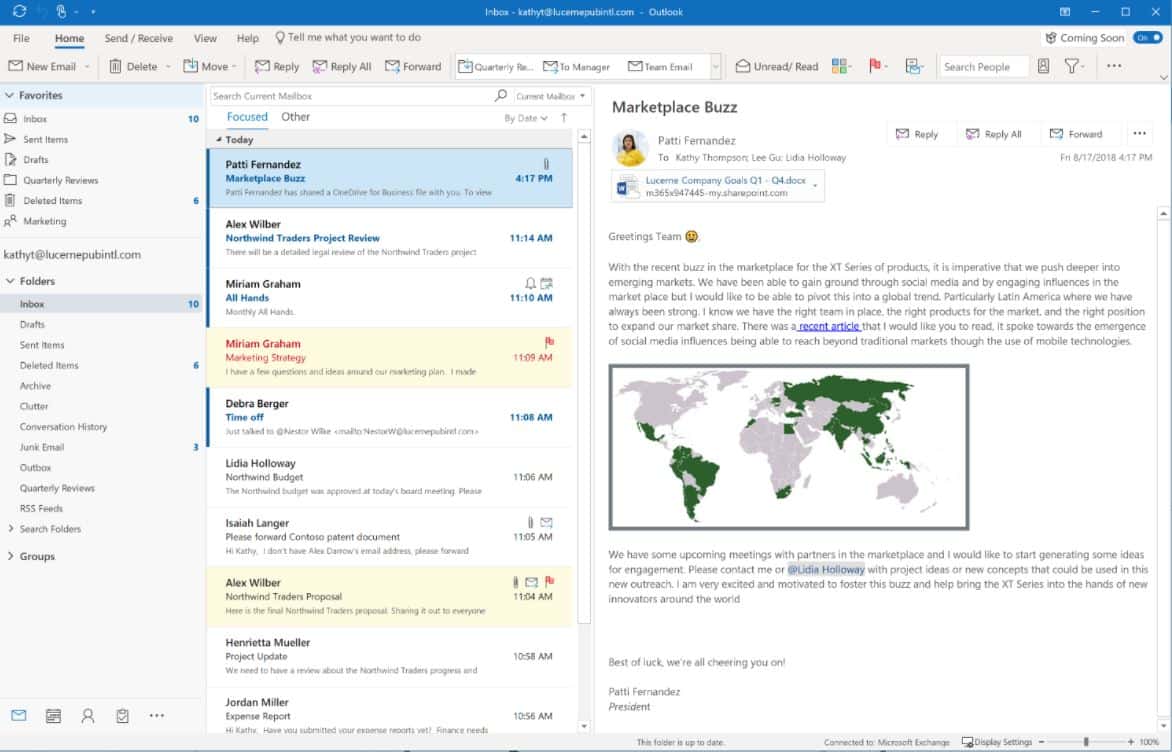

- Microsoft outlook for mac out of office reply full#
- Microsoft outlook for mac out of office reply password#
- Microsoft outlook for mac out of office reply windows#
If you use IMAP or /Exchange, outlook will sync a copy of the mail. Would anyone want to store a local copy of all their email?) Outlook informed me it is making a local copy of my Inbox (why
Microsoft outlook for mac out of office reply full#
Is it possible without having to do a full factory reset of the machine?
Microsoft outlook for mac out of office reply windows#
What possible benefit could there be in allowing a user to sign in to a program but then not letting them sign out? Crazy.ĭoes anyone know of a workaround for this that will allow you to sign out of Outlook on Windows 10?
Microsoft outlook for mac out of office reply password#
" In Outlook, it’s no longer possible to sign out of your account or be prompted for a password to sign in." This scared me off trying to recover that 10GB+ of wasted space on my SSD.Īnnoyed by all this, I decided to just sign out of Outlook, delete it and pretend this never happened, only to discover: Their local copies only to find that Outlook had deleted all their email from the server as well. Would anyone want to store a local copy of all their email?) and I tried to find correct settings online to tell Outlook to never make any local copies of anything and keep everything on the server where it belongs, but I discovered many people had deleted Upon signing in, Outlook informed me it is making a local copy of my Inbox (why I'm not well acquainted with Windows (or Outlook) and I've made, what I now know to be, the very grave mistake of allowing it to sign me into Outlook using my Microsoft account. While we wanted to make it easy to get back here, we collected data during the preview release that most responses are now composed in Quick Response.I need to sign out of Outlook (Office 365 application) on Windows 10. Now you have the full set of features provided by our Word 2013 powered compose experience just a button click away. No problem, just click the Pop Out button above the Quick Response area, and Outlook takes everything you’ve written and migrates it over to a new reply window: Occasionally you may decide that what you are writing isn’t a quick response, but rather something you want to compose full screen or perhaps you need to use a command that isn’t in the Message tab. With that information, we were able to build a special Message ribbon tab with the commands people need the most when responding:

To figure out which commands should be available with Quick Response, we used data from the Customer Experience Improvement Program which lets us understand which commands are used the most when replying or forwarding email.

How Quick Is My Quick ResponseĪs part of building the Quick Response feature, we knew we couldn’t provide all the same features that are available in the compose window because of limited space for all of those commands in the inbox. When you click on a conversation that shows the indicator, we’ll automatically bring you back to the mail you were composing so you can pick up where you left off. The draft indicator makes it easy for you to see which messages you still need to act on without switching to your drafts folder or looking around for open reply windows. The draft tag sticks around until you send your response or discard it. When you start to reply to a message, we add the keyword to messages or conversations in the message list. Informally (and obviously) we call it the draft indicator. Where Are My Drafts?īased on feedback from many of you during the preview release of Outlook 2013, we added an additional feature to Quick Response that shows which mails you have started to reply to but haven’t finished. Now directly from your inbox you can write your reply, adjust formatting, add an attachment, and send your response, all without opening a new window. When you reply to a message using Quick Response, the Reading Pane is replaced with the compose area you are used to seeing when sending email. To simplify the experience of responding to email, Outlook 2013 now lets you reply directly from your inbox, without the hassle of opening a new window: This feature came about when we observed that people using Outlook often have a number of reply windows open, taking up screen space and complicating their experience of using Outlook.

One of the new features in Outlook 2013 that I’ve heard a lot of positive feedback about is Quick Response, which lets you write replies or forwards without leaving your inbox.


 0 kommentar(er)
0 kommentar(er)
